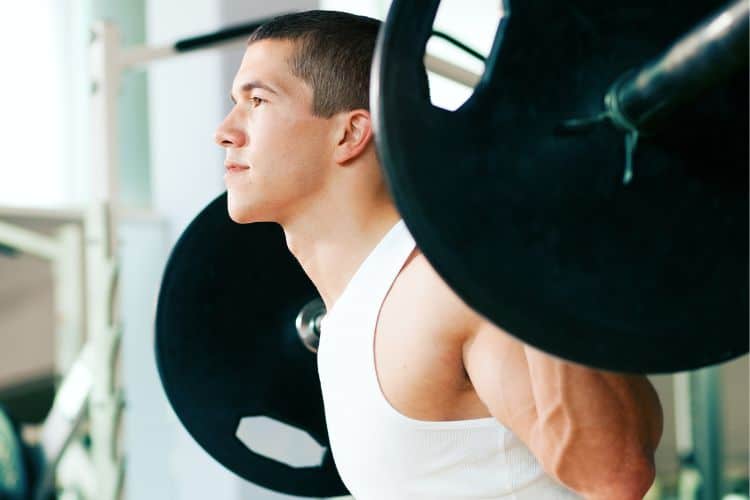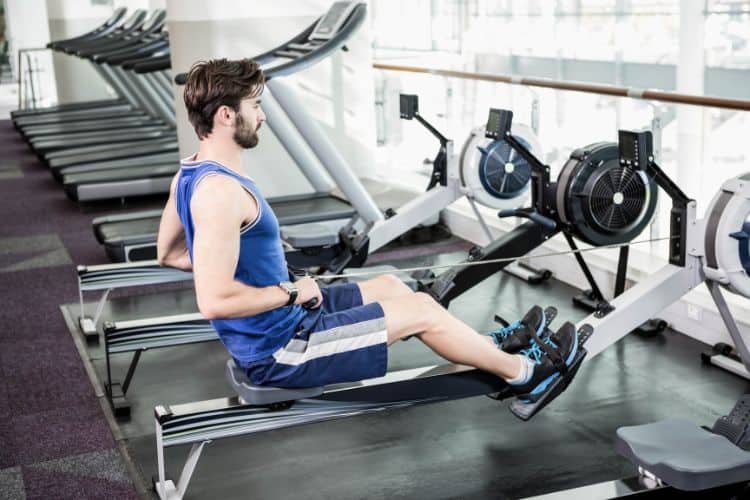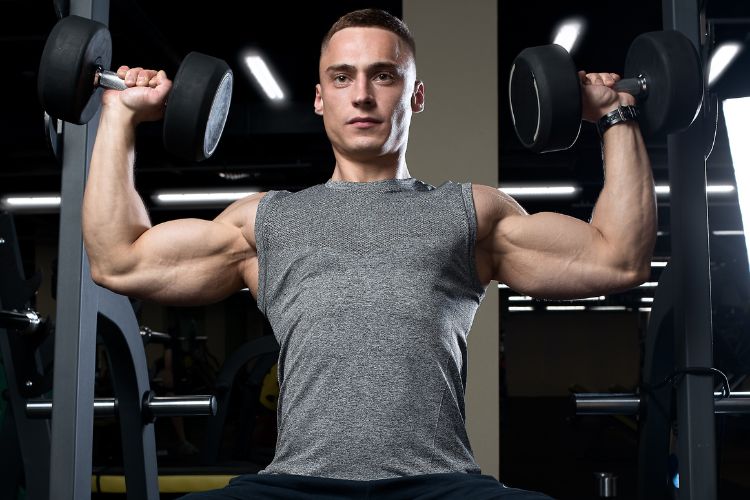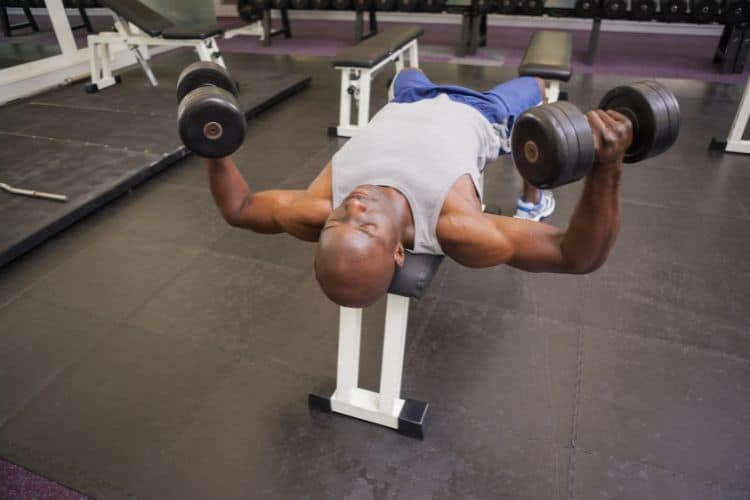
45 Minute Strength and Conditioning Workout for Total Body Power

Upper and Lower Body Split Workout to Build Muscle & Strength

5 Day Dumbbell Workout Split to Build Strength and Muscle

The Best 6 Day Dumbbell Training Program You Can Do Anywhere
Best Breathing Techniques For Health And Wellbeing

Breathing is the foundation of life. Every cell in our body requires oxygen to function optimally, and the act of breathing is our primary means of obtaining this vital element. Yet, most of us give little thought to the way we breathe. It’s an involuntary action that often goes unnoticed, but there’s power in mastering the art of breathing. By adopting specific techniques, we can improve our physical health, manage stress, and enhance our overall well-being. Here’s a deep dive into the best breathing techniques and their benefits:
Breathing Techniques And Their Benefits:
1. Diaphragmatic (Belly) Breathing How to:
Sit or lie down comfortably. Place one hand on your chest and the other on your abdomen. Inhale deeply through your nose, ensuring that your abdomen rises higher than your chest. Exhale slowly through your mouth or nose. Benefits: This technique helps strengthen the diaphragm, increases oxygen exchange in the lungs, reduces the work required to breathe, and lowers heart rate and blood pressure.
2. 4-7-8 Breathing How to: Breathing Techniques
Inhale quietly through your nose for 4 seconds. Hold your breath for 7 seconds. Exhale completely through your mouth, making a whooshing sound, for 8 seconds. This completes one cycle. Benefits: Created by Dr. Andrew Weil, this method acts as a natural tranquilizer for the nervous system. It helps reduce anxiety, promotes better sleep, and aids in stress management.
3. Box Breathing (Square Breathing) How to:
Inhale for 4 seconds. Hold your breath for 4 seconds. Exhale for 4 seconds. Pause and hold your breath again for 4 seconds. Benefits: Popular among Navy SEALs in their workout and athletes, this method enhances concentration, regulates the autonomic nervous system, and relieves stress.
4. Buteyko Breathing How to: Breathing Techniques
Start by taking a small, quiet breath in through your nose followed by a gentle exhale. Then hold your nose and keep your mouth closed, holding your breath for as long as comfortably possible. Resume normal breathing for about a minute, then repeat. Benefits: Developed by Dr. Konstantin Buteyko, this technique aims to reduce hyperventilation, improve oxygen delivery, and manage symptoms in conditions like asthma.
5. Alternate Nostril Breathing (Nadi Shodhana) How to:
Using your right thumb, close off your right nostril. Inhale deeply through your left nostril. Then, using your ring finger, close your left nostril and exhale through the right nostril. Inhale through the right nostril, close it off, and exhale through the left nostril. Continue alternating. Benefits: A staple in yoga traditions, this method harmonizes the left and right hemispheres of the brain, promotes relaxation, and enhances respiratory function.
6. Paced Breathing How to:
Determine a comfortable inhale and exhale length (typically starting at 5-6 seconds for each). Using a metronome or app, maintain this rhythm without holding your breath between inhales and exhales. Benefits: This can help in managing symptoms of disorders such as depression, anxiety, and PTSD. It’s also beneficial in childbirth for pain management and focus.
7. Breath Awareness Meditation How to: Breathing Techniques
Sit or lie down comfortably. Focus your attention on your natural breathing pattern without trying to change it. If your mind wanders, gently bring it back to your breath. Benefits: Enhances mindfulness, reduces stress, and fosters a deeper connection between mind and body.
8. Lion’s Breath (Simhasana Pranayama) How to:
Inhale deeply through your nose. As you exhale, open your mouth wide, stick out your tongue, and exhale forcefully while making a “ha” sound. Benefits: Releases tension in the face and chest, stimulates the throat chakra, and can boost mood by its naturally playful nature.
The Science Behind Breathing Techniques
Our breathing patterns play a crucial role in influencing our autonomic nervous system, which governs our stress response (fight or flight) and relaxation response (rest and digest). By controlling our breath, we can sway the balance of this system, promoting relaxation, improving cardiovascular health, and fostering mental clarity.
Harnessing the Power of Breathing: Delving Deeper
Breathing is much more than a mere physiological function; it’s a bridge between our mind and body. Throughout history, cultures worldwide have recognized the power of breath. Ancient yogis, Chinese Taoists, and even modern-day athletes have all cultivated practices centered around the breath. Let’s explore deeper aspects and additional techniques to appreciate the transformative power of breathing.
The Historical Context of Breathing Techniques
Ancient civilizations believed in the spiritual and therapeutic potential of breath. For instance, in yogic traditions, “prana” refers to the life force or energy that is inherent in breath. In traditional Chinese medicine, “qi” or “chi” represents a similar concept of vital energy. By mastering our breath, we can tap into these reservoirs of energy, promoting holistic health and spiritual growth.
Holotropic Breathwork How to:
Lie down in a comfortable space. Begin by breathing faster and deeper than usual. The aim is to saturate the body with oxygen. With closed eyes, allow any emerging feelings or sensations to surface without judgment. Benefits: Developed by Dr. Stanislav Grof, this technique can lead to profound experiences, sometimes comparable to those achieved in deep meditative or psychedelic states. It helps in emotional release and personal insight.
Resonant or Coherent Breathing How to: Breathing Techniques
Breathe in and out for equal intervals, typically five seconds in and five seconds out, without pausing in between. Benefits: This technique can synchronize heart rate and blood pressure rhythms, leading to a state known as coherence, where cognitive performance and emotional regulation are at their peak.
Sitali (Cooling Breath) How to:
Sit comfortably. Inhale deeply through a rolled tongue (like sucking through a straw). Close your mouth and exhale through the nose. Benefits: This technique cools the body, reduces inflammation, and can calm the mind, especially beneficial during hot weather or after a vigorous workout.
The Psychological Implications of Breathing
It’s fascinating to note how our breathing patterns change based on our emotional states. When anxious or stressed, our breaths tend to be shallow and quick. Conversely, in a state of relaxation, they are deep and rhythmic. Recognizing this connection, psychologists and therapists sometimes incorporate breathing exercises into cognitive-behavioral therapies, mindfulness-based interventions, and other therapeutic modalities to aid emotional regulation and combat anxiety, depression, and trauma.
Breathing and Athletic Performance
Athletes, from runners to swimmers, understand the importance of efficient breathing. Oxygen utilization can be the thin line between a gold medal and a missed opportunity. Techniques such as rhythmic breathing (synchronizing breaths with steps or strokes) and breath-holding drills can enhance performance, stamina, and oxygen efficiency.
Practical Tips for Integrating Breathing Exercises into Daily Life
Start Small: Begin with just 2-3 minutes of focused breathing daily, gradually increasing as you become more comfortable.
Use Technology: Several apps and wearable devices offer guidance on breathing exercises, monitoring, and feedback.
Consistency is Key: Just like physical exercise, the benefits of breathing exercises amplify with consistent practice.
Mind Your Posture: The way we sit or stand can impact our lung capacity. Ensure you’re in a posture that allows for full lung expansion, especially during deep breathing exercises.
Educate Yourself: Attend workshops, read books, or take online courses to understand the nuances of different techniques.
Breathing into a Better Future
The art and science of Breathing Techniques have vast implications, from our immediate physiological responses to the broader realms of mental health, spirituality, and athletic performance. By prioritizing this fundamental act, we can harness its power, unlocking benefits that permeate every facet of our lives. In a world filled with complexities, returning to the simplicity of our breath might just be the most profound step we can take towards holistic well-being.
Most Recommended
Subscribe to our Newsletter
Stay up to date on the latest men’s health, fitness and lifestyle trends and tips.
About Us
Men’s Fit Club was started with the goal of empowering men to get the most out of their lives. This meant going beyond exercise and diet tips to really address the broad range of issues that men face on a daily basis – topics like recreation, finding love, sexual health and even sound fashion advice.
Quick Links
© COPYRIGHT MEN'S FIT CLUB 2025. All Rights Reserved

